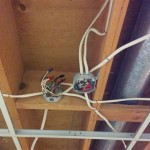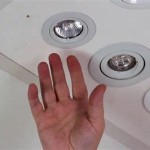In-Ceiling Recessed Lighting: Essential Considerations for a Brilliant Home
Recessed lighting, seamlessly integrated into the ceiling, has become a popular choice in modern homes due to its sleek aesthetics and exceptional functionality. When planning your in-ceiling recessed lighting, consider the following essential aspects to achieve an optimal lighting scheme that complements your décor and enhances your living space.
1. Choose the Right Fixture Type
Recessed lighting fixtures come in various types, each with its unique characteristics. Choose from fixed, adjustable, or gimbal fixtures. Fixed fixtures emit light in a fixed direction, while adjustable fixtures allow you to direct the light as desired. Gimbal fixtures offer the most flexibility, enabling precise beam adjustment for specific areas.
2. Determine the Trim Style
The trim style frames the recessed light and influences the overall aesthetic. Consider the trim's shape, size, and finish to match your décor. Popular trim styles include round, square, and decorative options, available in various materials such as metal, plastic, or plaster.
3. Choose the Correct Wattage and Bulb Type
The wattage of the bulb determines the brightness of the light. Consider the size and purpose of the room to select the appropriate wattage. The bulb type also plays a role in the light's quality, color, and energy efficiency. Choose from incandescent, halogen, LED, or fluorescent bulbs based on your specific needs.
4. Consider the Light Distribution
The light distribution pattern affects how the light spreads within the space. Flood fixtures provide a wide beam spread, while spot fixtures emit a focused beam. Choose flood fixtures for general illumination and spot fixtures for highlighting specific areas.
5. Plan the Recessed Light Placement
Proper placement of recessed lights ensures optimal illumination and a cohesive design. Plan the spacing and arrangement of the fixtures to avoid uneven lighting or shadows. Consider the room's dimensions, furniture layout, and natural light sources.
6. Choose the Right Dimmer
Dimmers allow you to adjust the brightness of the recessed lights, creating different ambiances. Select a dimmer compatible with the bulb type and fixture to ensure proper operation and prevent flickering or damage.
7. Consider Energy Efficiency
LED recessed lights are an energy-efficient option that consumes significantly less power than traditional bulbs. They offer longer lifespans, reducing maintenance costs and contributing to sustainability.
Conclusion
By considering these essential aspects, you can create a customized and effective in-ceiling recessed lighting plan that transforms your home into a beautifully illuminated space. Embrace the versatility and functionality of recessed lighting to enhance your décor, improve visibility, and create a warm and inviting atmosphere.

Recessed Lighting Guide Lowe S

How To Put Recessed Lights In The Ceiling

A Guide To Recessed Lighting 9 Trim Styles Know

Wafer Lights Vs Can Everything You Should Know

Halo 6 In White Recessed Lighting With Sloped Ceiling Trim Baffle 456w The Home Depot

Recessed Lighting Guide The Home Depot

The Pros Cons Of Recessed Lighting For New Construction

New Recessed Lighting Dots Dashes Lightology

Can Vs Canless Recessed Lighting Which To Choose

8 Pack Led Recessed Lighting 4 Inch Ceiling Lights With Junction Box 5 100 Dimmable Etl Certified 2700k Soft White Com
Related Posts








